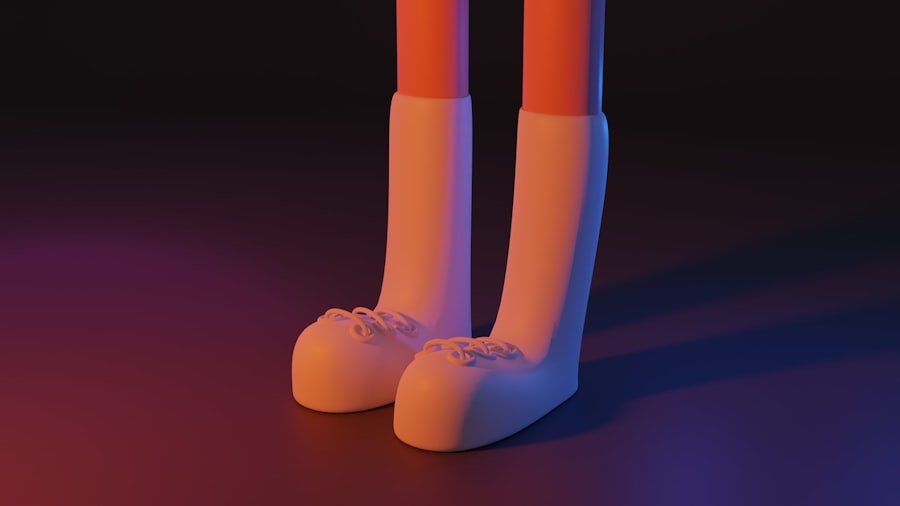The fashion industry is a multifaceted realm that encompasses a wide array of activities, from design and production to marketing and retail. It is a dynamic sector that reflects cultural shifts, societal trends, and technological advancements. At its core, the fashion industry is not merely about clothing; it is an intricate tapestry woven from creativity, commerce, and consumer behavior.
Designers, manufacturers, retailers, and consumers all play pivotal roles in this ecosystem, each contributing to the lifecycle of a garment. The industry is characterized by its seasonal cycles, with designers showcasing their collections at fashion weeks around the globe, influencing trends that will dictate what consumers wear in the coming months. Understanding this cyclical nature is crucial for anyone looking to enter the field, as it informs everything from design timelines to marketing strategies.
Moreover, the fashion industry is increasingly influenced by sustainability and ethical considerations. As consumers become more aware of the environmental impact of their purchasing decisions, brands are compelled to adopt more responsible practices. This shift has led to the rise of sustainable fashion, which emphasizes eco-friendly materials, ethical labor practices, and transparency in production processes.
Designers must now navigate a landscape where not only aesthetic appeal but also ethical considerations play a significant role in consumer choices. This evolving paradigm presents both challenges and opportunities for emerging designers who must balance creativity with responsibility. Understanding these complexities is essential for anyone aspiring to make their mark in the fashion world.
Key Takeaways
- The fashion industry is highly competitive and constantly evolving, requiring designers to stay updated on trends and consumer preferences.
- Developing a unique design concept is crucial for standing out in the market and attracting a loyal customer base.
- Creating a comprehensive business plan is essential for setting clear goals, identifying target markets, and establishing a budget for production and marketing.
- Building a strong brand identity involves creating a cohesive visual and emotional connection with consumers through branding, logo, and messaging.
- Understanding production and manufacturing processes, including sourcing materials and finding reliable manufacturers, is key to delivering high-quality products to customers.
- Implementing effective marketing and sales strategies, such as social media campaigns and collaborations with influencers, can help designers reach a wider audience and drive sales.
- Financial management, including budgeting, pricing strategies, and managing cash flow, is crucial for the long-term success and sustainability of a fashion business.
Developing Your Design Concept
The journey of a fashion designer begins with the development of a unique design concept that serves as the foundation for their collection. This initial phase is where creativity meets strategy, as designers must translate their artistic vision into a coherent theme that resonates with their target audience. Inspiration can come from various sources—art, nature, history, or even personal experiences—and it is essential for designers to cultivate a diverse range of influences to enrich their creative process.
A well-defined concept not only guides the design process but also helps in establishing a brand identity that can differentiate one’s work in a saturated market. This stage often involves sketching ideas, experimenting with fabrics, and creating mood boards that encapsulate the desired aesthetic. Once a concept is established, it is crucial to refine it through research and feedback.
Engaging with potential customers or industry peers can provide valuable insights into market trends and consumer preferences. This iterative process allows designers to adapt their ideas while maintaining the integrity of their original vision. Additionally, understanding the technical aspects of garment construction is vital at this stage; designers must consider how their concepts will translate into wearable pieces.
This includes selecting appropriate materials, understanding fit and functionality, and ensuring that the designs can be produced within budget constraints. By marrying creativity with practicality, designers can create collections that are not only visually appealing but also commercially viable.
Creating a Business Plan

A comprehensive business plan is an indispensable tool for any aspiring fashion designer looking to turn their creative passion into a sustainable enterprise. This document serves as a roadmap, outlining the vision for the brand, target market, competitive landscape, and financial projections. A well-structured business plan begins with an executive summary that encapsulates the essence of the brand and its unique selling proposition.
Following this, a detailed analysis of the target market is essential; understanding who your customers are, their buying habits, and what drives their purchasing decisions can significantly influence your design and marketing strategies. In addition to market analysis, a business plan should include operational details such as production processes, supply chain logistics, and distribution channels. This section outlines how the designer intends to bring their creations to market while ensuring quality and efficiency.
Financial projections are equally critical; they provide insight into startup costs, pricing strategies, and expected revenue streams. By forecasting potential challenges and outlining strategies for overcoming them, designers can better prepare for the realities of running a fashion business. Ultimately, a solid business plan not only helps secure funding from investors or lenders but also serves as a guiding document that keeps designers focused on their goals as they navigate the complexities of the fashion industry.
Building Your Brand Identity
Establishing a strong brand identity is paramount in the competitive landscape of fashion design. A brand identity encompasses everything from the visual elements—such as logos and color schemes—to the emotional connection that consumers feel towards a brand. It reflects the designer’s values, mission, and aesthetic vision while resonating with the target audience.
To build an effective brand identity, designers must first articulate what sets them apart from others in the industry. This could be a unique design philosophy, a commitment to sustainability, or an innovative approach to traditional craftsmanship. By clearly defining these elements, designers can create a cohesive narrative that informs all aspects of their brand.
Once the core identity is established, it is essential to communicate it consistently across various platforms. This includes social media presence, website design, packaging, and even customer service interactions. Each touchpoint should reinforce the brand’s message and aesthetic to create a unified experience for consumers.
Additionally, storytelling plays a crucial role in brand identity; sharing the inspiration behind collections or the journey of the designer can foster deeper connections with customers. Engaging with audiences through authentic narratives not only enhances brand loyalty but also encourages word-of-mouth marketing—a powerful tool in the fashion industry. By investing time and effort into building a compelling brand identity, designers can cultivate a loyal customer base that resonates with their vision.
Production and Manufacturing
The production and manufacturing phase is where creative concepts transform into tangible products ready for market consumption. This stage involves selecting appropriate materials and finding reliable manufacturers who can bring designs to life while adhering to quality standards and ethical practices. Designers must navigate various options—from local artisans to overseas factories—each presenting its own set of advantages and challenges.
Factors such as cost, lead times, and production capabilities must be carefully considered to ensure that the final products align with both the designer’s vision and market expectations. Moreover, effective communication with manufacturers is crucial throughout this process. Designers need to provide clear specifications regarding materials, sizing, and construction techniques to avoid misunderstandings that could lead to costly errors or delays.
Sampling plays an integral role in this phase; creating prototypes allows designers to assess fit and finish before committing to larger production runs. Additionally, staying informed about industry trends in manufacturing—such as advancements in sustainable practices or innovative materials—can provide designers with a competitive edge. By prioritizing quality control and fostering strong relationships with manufacturers, designers can ensure that their collections not only meet aesthetic standards but also resonate with consumers’ growing demand for responsible production practices.
Marketing and Sales Strategies

The Importance of Effective Marketing in Fashion
In the highly competitive fashion industry, effective marketing and sales strategies are crucial for gaining visibility and driving sales. The digital age has revolutionized the way brands connect with consumers, with social media platforms like Instagram and TikTok becoming essential tools for showcasing collections and engaging with audiences in real-time.
Building Communities and Engaging with Audiences
Designers must utilize these platforms not only to display their work but also to build communities around their brands. Engaging content, such as behind-the-scenes glimpses of the design process or interactive polls, can foster deeper connections with followers while encouraging them to share their experiences with others. This helps to create a loyal customer base and promotes brand awareness.
Combining Traditional and Digital Marketing Strategies
In addition to social media marketing, traditional methods such as fashion shows and pop-up shops still hold significant value in creating buzz around new collections. Collaborating with influencers or other brands can also amplify reach and attract new customers who may not have been aware of the designer’s work otherwise. By combining these strategies, designers can create comprehensive campaigns that effectively promote their collections while driving sales.
The Role of E-commerce in Fashion Marketing
Establishing an e-commerce presence is crucial in today’s retail landscape. Having an online store allows designers to reach global audiences while providing convenience for consumers. By combining innovative digital strategies with traditional marketing techniques, designers can create a strong online presence and drive sales.
Financial Management for Fashion Designers
Financial management is often one of the most challenging aspects for fashion designers navigating their entrepreneurial journey. Understanding cash flow—how money moves in and out of the business—is critical for maintaining financial health. Designers must keep meticulous records of expenses related to materials, production costs, marketing efforts, and overheads such as rent or utilities.
Creating a budget helps in tracking these expenses against projected income from sales, allowing designers to make informed decisions about pricing strategies and inventory management. Additionally, seeking professional advice from accountants or financial advisors can provide invaluable insights into managing finances effectively. They can assist in setting up accounting systems that streamline financial tracking while ensuring compliance with tax regulations.
Moreover, understanding funding options—whether through loans, grants, or investors—can help designers secure necessary capital for growth initiatives or unexpected expenses. By prioritizing financial literacy and management practices from the outset, fashion designers can build sustainable businesses that thrive in an ever-evolving industry landscape while allowing them to focus on what they do best: creating beautiful garments that resonate with consumers around the world.
FAQs
What is Launch My Fashion Line 2025?
Launch My Fashion Line 2025 is a comprehensive guide for new designers looking to start their own fashion line. It provides step-by-step instructions and valuable insights to help new designers navigate the fashion industry and successfully launch their own brand.
What does the guide cover?
The guide covers various aspects of starting a fashion line, including market research, design development, production, branding, marketing, and sales. It also includes tips on building a strong brand identity, understanding target customers, and creating a cohesive collection.
Who can benefit from this guide?
The guide is designed for new designers who are passionate about fashion and want to start their own clothing line. It is also valuable for fashion students, aspiring entrepreneurs, and anyone interested in learning about the fashion industry.
Is the guide specific to a certain type of fashion line?
The guide is designed to be comprehensive and applicable to various types of fashion lines, including ready-to-wear, couture, athleisure, accessories, and more. It provides general principles and best practices that can be adapted to different niches within the fashion industry.
Is the guide updated with the latest industry trends and practices?
Yes, Launch My Fashion Line 2025 is regularly updated to reflect the latest industry trends, technologies, and best practices. It aims to provide new designers with relevant and up-to-date information to help them succeed in the ever-evolving fashion industry.





